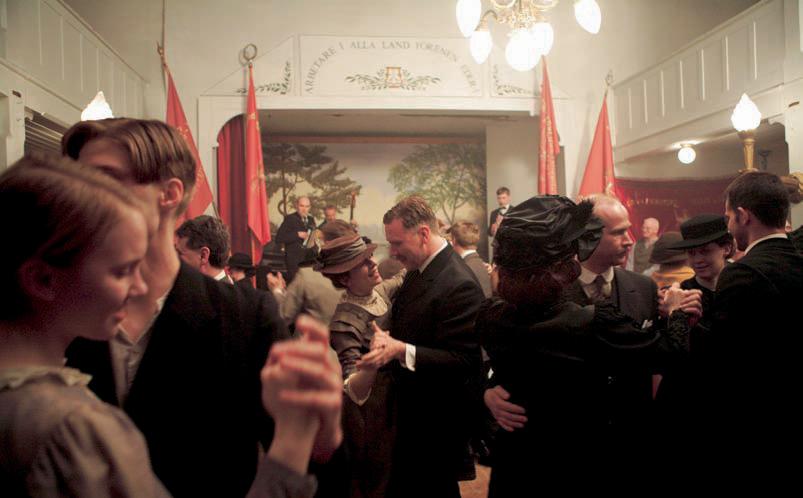"From day one, our profile was to do serious films," Final Cut producer Thomas Stenderup says. Stenderup took a master's in political science at Copenhagen University, and also taught there, before switching gears and earning a degree in production at the National Film School of Denmark.
"We're not at tiny kitchen-table outfit, but we're certainly not a big company either".
"The company never went in a more commercial direction," Stenderup says. "Probably, all us here feel that we could, in principle, be doing other things. But we have chosen to do what we do, and each other. Sure, we have had to make certain commercial considerations in order to survive, but money was never a driving factor at all."
Final Cut's crowning achievement thus far is Peter Schønau Fog's critically acclaimed "The Art of Crying", which has won 19 international awards and is on the 2007 top ten list of most seen Danish films. Now, the company has big expectations for "Maria Larsson's Everlasting Moment", a historical drama by veteran Swedish filmmaker Jan Troell. "Everlasting Moment" is a Danish-Swedish co-production with Final Cut and Thomas Stenderup as producer. At the time of this writing, Troell is putting the finishing touches to the film.
"The Art of Crying". Photo: Søren Rønholt
WORKING TOGETHER
Early on, Final Cut produced only documentaries, but as the years went by, it became increasingly difficult to make a living from the kind of expensive, internationally oriented productions Final Cut likes to sink its teeth into.
Six years ago, Final Cut made a move into narrative films and has co-produced several Nordic features since then. "The decision to expand into dramatic productions was extremely crucial, because it threw everything else into perspective," says Mikael Opstrup, a self-taught producer once affiliated with the Danish Film Institute. Opstrup came to Final Cut in 2002 as head of documentary film production. "Making narrative films is almost required when you also want to do documentaries of the scale we like to operate on," Opstrup says. "It's very difficult to make a living from documentaries alone. On the other hand, the pressure of doing features is so much greater. When it's good, it's great, but there's also a lot more risk."
Final Cut is a small company. Opstrup, Stenderup and a third producer, Signe Byrge Sørensen – along with Lena Lundt, who is in charge of administration – comprise the core, with a network of more or less loosely affiliated freelancers to draw on when actual production starts. "We're not a tiny kitchen-table outfit, but we're certainly not a big company either," Stenderup says. "We're in the middle range. We've grown a bit in recent years and put on some muscle, because we've succeeded in certain respects.
"Right now, we could choose to expand – and we are, but in tiny increments," Stenderup says. "I may not be entirely right about this, but I'm afraid what happens in a big company is that producers start competing against each other instead of working together, while directors get to feeling they are standing in line somehow. Sure, in a bigger company, you might have personal contact to the producer you work with, but at Final Cut there will typically be several of us working on each project simultaneously – to help the projects and one another as much as possible."
At Final Cut, everyone supports and consults one another, and everyone reads the others' scripts. "We provide another pair of eyes on each other's calls," Stenderup says. "Final Cut has something of a mom-and-pop feel about it. There is no management that comes in and says, ‘Guys, things aren't going well. You've got to do so and so.' The company is what we make it. You feel that as an individual."


